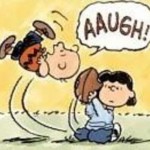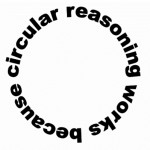… and you shouldn’t either.
With that out of the way, let’s get right down to it:
1. They Pulled a “Bait and Switch”
Regardless of what anyone at Digg says, this was just wrong. They should have either kept the Diggbar as a URL shortener or launched it initially with its current functionality.

Wikipedia defines a Bait and Switch as:
In retail sales, a bait and switch is a form of fraud in which the party putting forth the fraud lures in customers by advertising a product or service at an unprofitably low price, then reveals to potential customers that the advertised good is not available but that a substitute is available.
Below is my version of the definition as it fits with what Digg has done:
In social media, a bait and switch is a form of fraud in which the website putting forth the fraud lures in users by promoting their service as a portal to great content, then reveals to the user that the functionality has been changed but that substitute content is available.
We were pulled in because it was easy to use, helped to promote strong content, and displayed the source to everyone who clicked on it, Digg user or not. It now takes the vast majority of most people’s Twitter followers to the page on Digg relating to the content. Baited. Switched.
2. Social Media is About Sharing Content
Most visitors to Digg come there to find the hot stories, images, and videos of the day. Some use Twitter for the same reason. When we post links on Twitter, most people do so hoping to share something that they found interesting, funny, or compelling with their friends.

There is nothing interesting, funny, or compelling about Digg.com. The content that Digg.com LINKS TO can be interesting, funny, and compelling, but nothing on the site itself is worth tweeting.
3. The Rationale Behind the Change was Incorrect
It was noted that Techcrunch uses a URL shortener on their site to direct traffic in a compact manner back to Techcrunch. This makes sense because it’s a blog. It produces it’s own content (see reason #2).

Digg does not produce content within the site itself other than the blog and the occasional video interview. The comparison is invalid. The intent might be the same, but the rationale behind mimicking Techcrunch is flawed(.
4. Digg Users Don’t Like It
All too often, Digg does things from their perspective only. They have in the past accommodated their users wishes, but some of the decisions they make are almost too self-centered. It’s a user generated site. We create the buzz. We supply the stories. We write about the site on our blogs. We tell our friends. Without the users, Digg would not be able to function. I would love to point to the discussion that Digg had with its users and the feedback that they received as a result, but there was no discussion, no chance for feedback. Heck, there wasn’t even an announcement of the change until after the change was made.

The reason there was no discussion is because they were well aware that the feedback would be negative and that the community wouldn’t like it and they did it anyway.
5. Twitter Users Don’t Like It
It’s an extra click for most Twitter users to get to the content that they were intended to see. That doesn’t seem like a big deal, right? If you can show me any other service or website that requires a second click to display the content, I’ll do a video of me dancing in my underwear and post it on YouTube.

6. There are Better Alternatives
Why did people use the Digg URL shortener? Because it displayed the content, had a Digg button in the frame, it tracked clicks, and for some because it’s simple to create (just put “digg.com” in front of any URL and Voila!). Here are alternatives and brief descriptions:
- Bit.ly – Great tracking, simple toolbar interface, and redirects to the source
- Su.pr – A work in progress, but it connects to Twitter and Facebook, has decent tracking, and helps to promote good content.
- Sharetool – (Almost) everything that Diggbar was and adds other social bookmarking tools to the toolbar

7. Sheer Principle
The entire situation was, in my opinion, handled wrong. As I stated, if this was the plan, they should have rolled it out like that. If it wasn’t the plan, they should have made the change more transparently. I cannot in good conscience Tweet a diggbar link ever again (other than this one and only because doing so appeals to the wonderful nature of irony).

BUT WAIT, THERE’S A SOLUTION
It isn’t too late to fix this and make everyone happy. Digg can keep the functionality of the current “Share” features they have attached to submissions. The majority of users who tweet or add links to Facebook from Digg do so through the button on the submission itself. When they do, the standard shortened URL is followed by a Twitter “?t” and a Facebook “?f”.
Tweets and Facebook posts from the Digg.com story page can maintain their current functionality of sending logged in users to the source and unauthenticated or non-users to the Digg page. The majority of shares will still accomplish Digg’s goals.
For those of use who prefer the “old way”, any Diggbar shortened URLs that are raw (in other words, the ones that don’t have ?t and ?f at the end of the the URL) will use the old functionality. The only way to generate this URL would be through putting “digg.com” in front of a URL, a browser add-on (that I’m sure someone would be happy to develop at no cost to Digg), or simply by erasing the ?t or ?f.
If Digg checks the sources closely, they’ll see that the majority of their traffic that comes from Diggbar has the added characters at the end because most users are sharing it that way. The “loss” from those who chose to use the old-style version of the Diggbar would not be a loss at all. If anything, Digg would gain from the small percentage of users who then use the Diggbar because more people would be exposed to the domain.
It’s just a thought.
Read more on this social media blog.
